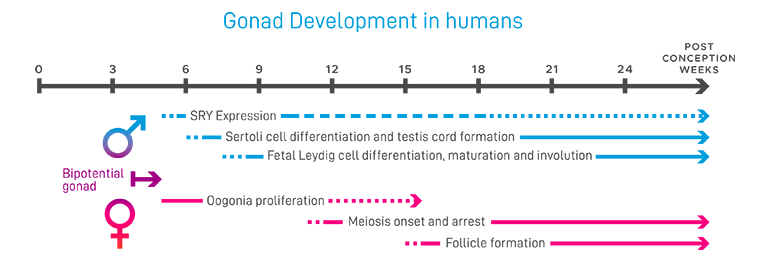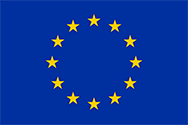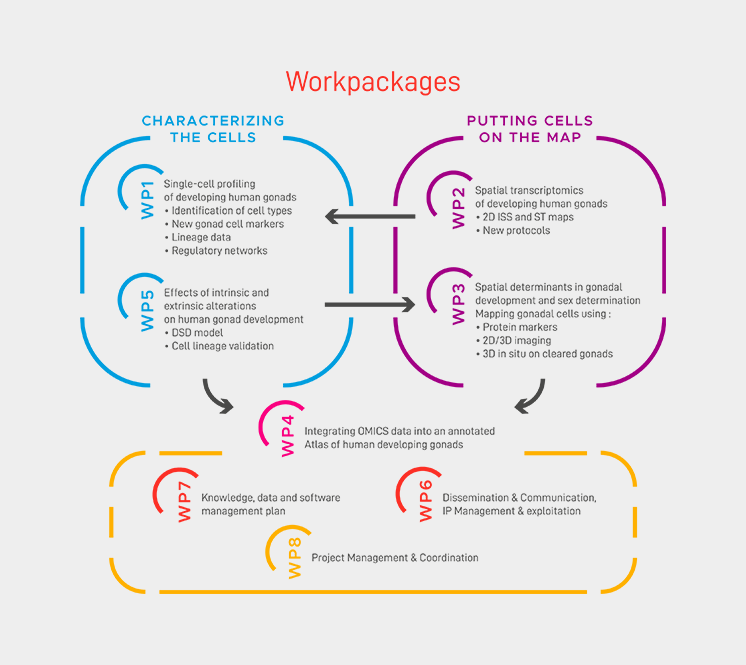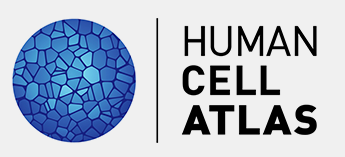Approach

The overall HUGODECA concept is grounded on the integration of multiple synergistic expertise and technologies (single cell, profiling, 2D transcriptomics, 3D imaging) for a single ground-breaking goal, namely being able to build, for the first time, a developmental cell atlas of human gonads during sex determination. HUGODECA will characterize the cellular and molecular mechanisms that control the emergence of sex specific traits during human development.
The project is organized around 4 main scientific objectives and will provide a better understanding of the association between gestational age, genetic sex, and the different steps of gonad differentiation. Hence, the project concept will be based on a systematic comparison of the human developing gonads from 4 to 20 post-conception weeks (PCW) in order to provide the first reference atlas, at a single-cell resolution, of gonadal cells and reproductive tracts. This atlas will be available to public, clinicians, and scientists through an interactive web portal. Data will also implement the Human Cell Atlas database.
Methodology
Although the genetic basis of mammalian sex determination and differentiation has advanced considerably in recent years, an accurate diagnosis cannot be provided for the majority of 46,XY gonadal dysgenesis patients (i.e. with anomalies in gonadal development that result in the presence of female external and internal genitalia despite the 46,XY karyotype) or the 46,XX gonadal dysgenesis patients (characterized by male external genitalia). Given the increasing resolution of the new techniques presented in this project and the increasing power of bioinformatics, we are likely to identify an increasing number of potential new target genes and biomarkers for DSD.
Expected impacts
IMPACT 1
IMPACT 2
IMPACT 3
IMPACT 4
Milestones
The HUGODECA project will be running from January 2020 to December 2021. In this short period of time, research teams will deliver on 4 main fronts:
- Referencing the cell atlas of the developing gonads
- Integrating multidimensional OMICS data across platforms
- Evaluating the accuracy of ex vivo culture models of human gonad development
Launching a web portal for both clinicians and patients to share data, as soon as June 2020
Work packages
The HUGODECA project is organized in 5 work packages dedicated to:
- cell profiling and lineage analysis of the developing human gonads during sex determination (WP1),
- building cellular and molecular maps of the developing gonads (WP2 and WP3),
- implementing novel tools and OMICS data processing pipelines for the integration of multidimensional OMICS data (WP4),
- analyzing the consequences of dysregulating key signaling pathways on gonad development (WP5).
WP1, WP2, WP3 and WP5 have been designed to progress independently and/or in parallel to define the relevant tools used for building the final human gonad cell atlas (WP4 and WP6). WP6 to 8 consist in support activities: dissemination and communication, intellectual property management, exploitation, data management and coordination of the project.
Project clustering
The HUGODECA project is part of the HUMAN CELL ATLAS initiative. The HUMAN CELL ATLAS mission is to create comprehensive reference maps of all human cells—the fundamental units of life—as a basis for both understanding human health and diagnosing, monitoring, and treating disease.
Visit website
This project has received funding from the European Union's Horizon 2020 Research and Innovation Programme under Grant Agreement No 874741



